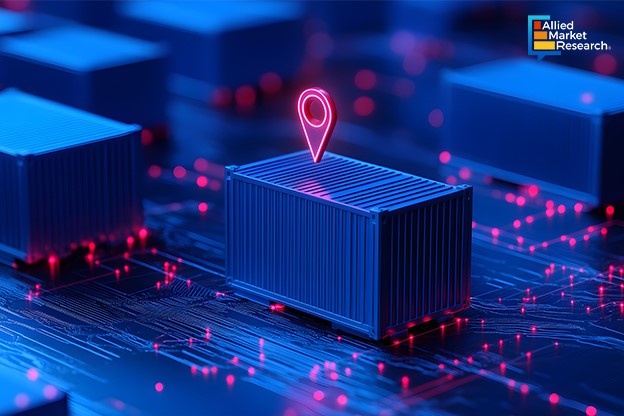Revolutionizing Supply Chain Visibility with Advanced Container Tracking Systems

26 Dec
2024
Highlights:
- Introduction to container tracking systems
- Promising benefits of automated container tracking
- Latest shipment tracing methods
- Notable acquisitions made by key players in 2024
Container tracking systems represent a key technological innovation, allowing companies to monitor the location and status of their containers as they move through the supply chain. These advanced systems mainly use a combination of GPS and other tracking technologies that provide real-time information about the location, condition, and status of containers. Usually, container tracking systems are components of larger fleet tracking systems that give visibility across various logistics assets. Robust fleet tracking systems allow businesses to track their trailers, portable equipment, and cargo on both overhead and micro levels. They are able to offer real-time location, condition, and custody data on individual containers. The goal of designing these systems is to offer visibility at the level of the individual shipment to gain better insight and control over fleet management operations.
Notable advantages of automated ocean container tracking
With millions of containers carrying goods worth billions of dollars being transported worldwide, effective tracking has become essential. There are several advantages of automating ocean freight tracking, which helps streamline the entire shipping industry. Advanced tracking systems use Maritime AI™ technology that utilizes AI and machine learning algorithms, collecting and analyzing vast amounts of data from various sources. They include satellite imagery, weather patterns, and port data to offer real-time data on container movements. This further generates the most accurate ETA predictions for the entire global fleet of container vessels. The capability of providing real-time visibility of containers makes these systems highly essential when dealing with transshipments, as the container is unloaded at multiple ports and reloaded onto different levels.
Moreover, container tracking systems provide valuable insights into inventory locations, enabling businesses to anticipate delays or early arrivals. This capability supports effective inventory management, allowing for informed decision-making. By recognizing supply chain challenges such as port bottlenecks and inefficiencies, container tracking helps organizations enhance operational efficiency and minimize costs, leading to more streamlined operations.
In addition, these systems reduce time spent on logistics by eliminating manual tasks like phone calls and waiting on hold while logistics managers search for container locations. Businesses now automate notifications through exception management using a Maritime AI™ solution for container tracking. This allows logistics teams to focus on containers that are notably late or arriving early, streamlining operations and improving overall efficiency.
Furthermore, they help reduce shipping costs and avoid fees by optimizing routes, avoiding congested ports, and enhancing the accuracy of ETA by utilizing Maritime AI™ technology. Container tracking systems also minimize avoidable detention and demurrage charges by providing real-time and precise ETAs, leading to more efficient shipping operations. Such promising advantages of these systems have increased their adoption in the landscape of maritime, thereby driving the growth of the container tracking industry.
Modern methods that have redefined shipment tracing
Automatic Identification Systems (AIS) tracking has become the new standard in modern logistics. Recently, according to SOLAS regulation V/19, large international container vessels must be equipped with AIS. These onboard transponders automatically broadcast the ship's heading, position, and speed using very high-frequency radio. This information is transmitted to nearby vessels and land-based systems, allowing carriers and tracking service providers to monitor container assignments effectively.
On the other hand, container tracking devices (CDS) have emerged as one of the promising methods in this field. These devices are installed inside or outside containers or used as seals with locking mechanisms. They transmit the shipment's latitude and longitude to a central server and monitor additional factors like temperature and humidity for refrigerated containers by utilizing GPS. CDSs communicate through satellite or cellular networks, allowing them to track shipments even in areas without AIS coverage.
Sinay and SafeCube joined hands to bring digital innovation to the maritime industry
In April 2024, Sinay, a French Blue Tech company specializing in ocean freight tracking announced its acquisition of SafeCube, a developer of advanced digital container tracking. With this acquisition, Sinay aims to offer a full set of solutions for ocean freight management by integrating SafeCube’s state-of-the-art software into its portfolio. In addition, the Sinay Developer platform plans to offer a wide range of APIs for developers who want to incorporate container tracking into their systems.
Winding up
Container tracking systems have revolutionized the maritime industry by enhancing visibility and efficiency in shipping operations. Moreover, an increase in the number of smart containers and ongoing digitalization is expected to fuel the development of more advanced tracking systems in the coming years.
To attain more knowledge about the futuristic trends in the container tracking industry, feel free to talk to our industry analysts today!

Rosy Behera
Author's Bio- Rosy Behera holds a bachelor’s degree in Electrical and Electronics Engineering and now she is a content writer by profession. She loves to portray her thoughts and ideas with a nice command of words. Grabbing an audience with her creative write-ups is one of her biggest assets so far. Apart from writing, she is a certified “Odisi” dancer and has done Gardharva in Drawing, Painting, and Arts. She always explores new things through travel and is a big foodie.
The Impact of AI Integration and Advanced Charging Technologies on the Electric Van Industry
Avenue: Entire Library membership of Allied Market Research Reports at your disposal
- Avenue is an innovative subscription-based online report database.
- Avail an online access to the entire library of syndicated reports on more than 2,000 niche industries and company profiles on more than 12,000 firms across 11 domains.
- A cost-effective model tailored for entrepreneurs, investors, and students & researchers at universities.
- Request customizations, suggest new reports, and avail analyst support as per your requirements.
- Get an access to the library of reports at any time from any device and anywhere.
Related Post
-
How are Submarine Cables Transforming Global Connectivity with Enhanced User Experience?
-
Endoscopy Procedures: Transformations in Techniques and Applications
-
AI-Powered Video Analytics: How the Product Actually Works for enterprises
-
Painting Robots: Transforming Precision Coating and Creative Applications
-
Innovations in Pharmacovigilance Systems Advancing Patient Safety
-
Understanding Edge Security: Keeping Data Safe Near the Source
-
Exploring the Use and Advancements of 3D Laser Scanners in Professional Applications
-
Reinforcing Industrial Controls with Smarter Tools and Training








